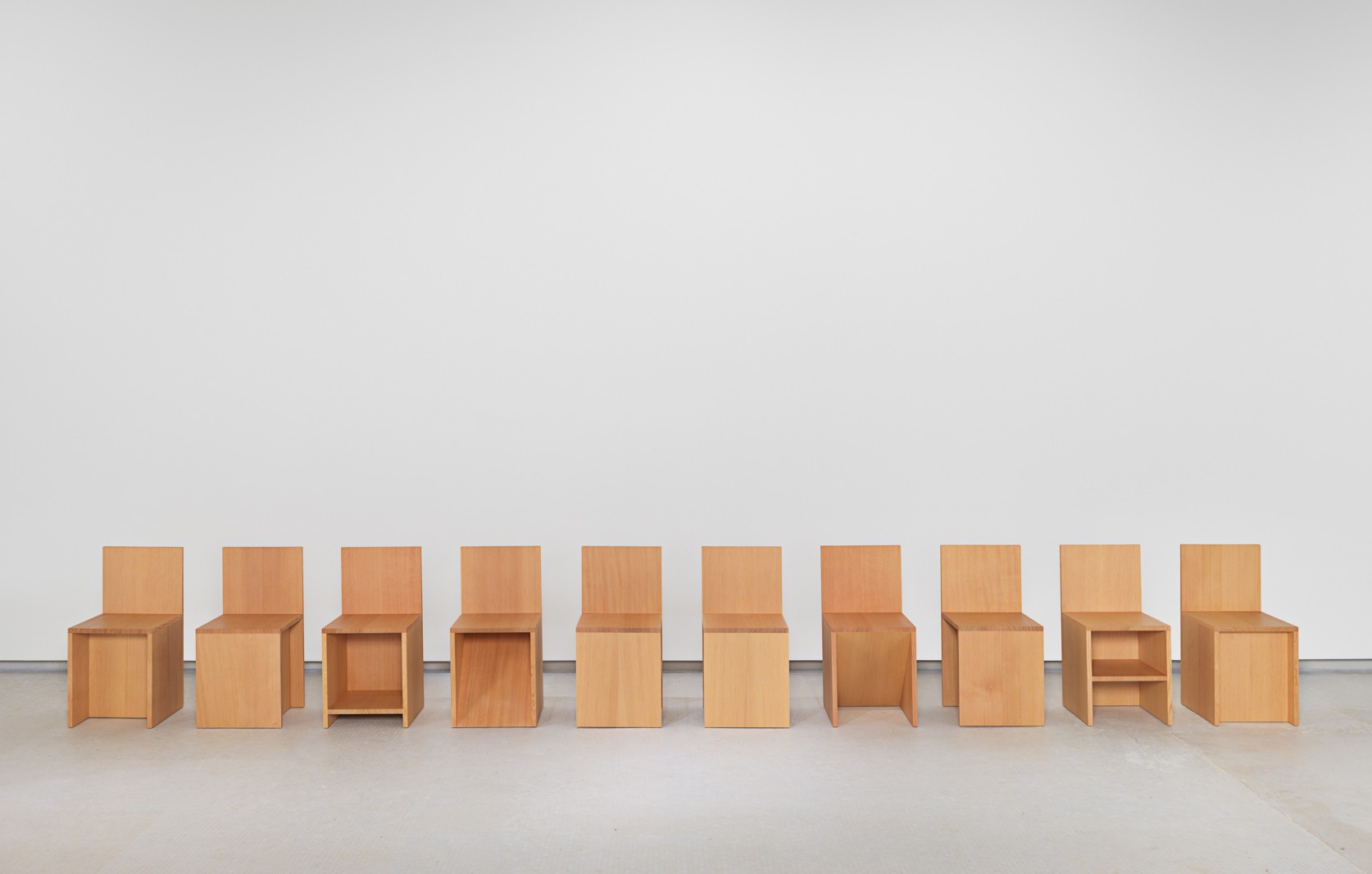

In the early 1970s, Donald Judd began to design furniture for 101 Spring Street in New York with his first designs were a wood bed and metal sinks. In 1977, he returned to furniture design through necessity for furniture for his residence in Marfa, Texas. By 1984, Judd had designed a range of wood furniture including beds, desks, benches, chairs, and shelves; and metal furniture including chairs, benches, beds, and a table. That same year, Judd had his first exhibition of metal furniture at Max Protetch in New York. From 1984 to 1993, he continued to develop new designs. At this time he began writing in more formal terms about furniture and his approach to design, fabrication, sales, and distribution.
Fundamental to Judd’s designs are his specifications regarding dimensions, material type, finish, and construction of each piece. Judd specified that the quality remain high, a considered approached given that fabrication of the furniture involved the expertise and handwork of both local carpenters and master craftsmen. He selected fabricators he entrusted with the interpretations of his designs, working directly with them to develop and refine his desired level of quality.
Judd outlined his concerns for the fabrication, distribution, representation, and exhibition of his furniture in “It’s Hard To Find A Good Lamp,” an essay written for the Museum Boymans-van Beuningen catalogue in 1993. Judd maintained a small distribution as an essential element of the process that continues today.
Judd Foundation has continued to fabricate Judd’s furniture as originally designed through Donald Judd™ Furniture.
For additional information and to purchase Donald Judd™ Furniture, please visit the Donald Judd™ Furniture website.
Furniture by Donald Judd is represented by Salon 94 Design in North America.